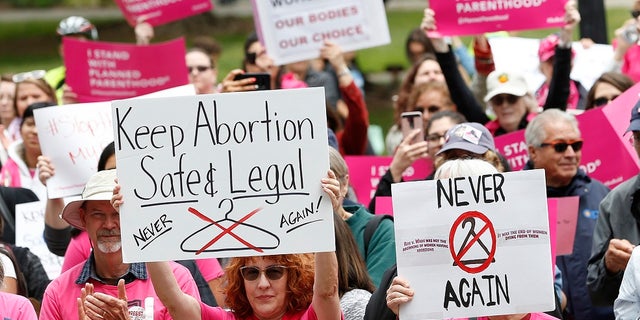The 2022 midterm election has come and has not yet entirely gone, because as I write this, there are still a dozen House seats up for grabs and votes are still being cured and counted. As a Democrat, I come away from this election with several thoughts; but here are 5 of my takeaways from this latest midterm election cycle.
1. Biden knows what he’s doing
President Joe Biden was going to be an albatross around the Democrat’s necks with his 41% favorability rating heading into the midterms and 44% unfavorable in the exit polls; but that just wasn’t the case. Prior to the midterms, every Democratic Senate candidate was polling higher than the president in their home states and individual voters were very much able to differentiate from the president, the party, the candidate and their goals for the future.
The former senator, vice president and now president, has, as I have always maintained, not governed based on the polls. His “no malarkey” style, attacking the MAGA arm of the GOP turned out to be a good and helpful thing for Democrats, and I believe, Biden knew that. The president accurately predicted that the Democratic voters might surprise us, and they did, with this being one of the four best midterms for the party controlling the White House in the last century. This is a man who has had a lifetime of political experience. He knows what he’s doing and people, his party especially, shouldn’t have underestimated him.
STUDENT LOAN ‘BUYOUT,’ ABORTION WON MIDTERMS FOR DEMOCRATS, BIDEN, CRITICS SAY
2. The polls (and most pundits) were wrong
Poll after poll and pundit after pundit told a very different story than what happened on Midterm 2022 election night last week. Most pundits based their predictions on those very same polls. The general consensus? Republicans would easily win the House and perhaps the Senate.

Pennsylvania Democratic Senator-elect John Fetterman participates in a debate with his GOP challenger Dr. Mehmet Oz on October 25, 2022, in Harrisburg, PA.
(NewsNation)
We need to take a good hard look in the mirror with polling and our current polling methodology. Haven’t we learned anything from 2016? When we had those shadow Donald Trump voters who didn’t show up in the polls? That happened again this election cycle whether it be regarding a candidate’s favorability, how many people would turn out to vote for one candidate or party, the issue(s) that matter, etc.
What I see (and have since 2016) is our polling system is outdated and isn’t accurate enough for the times we live in and how we live. For example, many people, Gen Z members especially do not have home phones. And even though some people texted you or called you on your cell to obtain the data for their poll/s, that isn’t the majority.
Second, we have some live people calling and some robo calls; can the latter differentiate between a person who is answering genuinely? And how are the questions posed? We have seen polls back-to-back in a 24-hour period with entirely different results simply based on how the question is phrased.
Lastly, some polling outlets have become extremely right- or left leaning; framing the question in a manner that benefits their political bend. Polling should just be number crunching; we need to get back to the basics with a more modern system that keeps up with the times.
3. Inflation wasn’t the only ‘kitchen table’ issue
Speaking of the polls, you would think there wasn’t any other issue except for inflation. It was the ‘kitchen table’ issues that mattered to voters. Polls again got it wrong. It wasn’t just the ‘economy stupid’ as James Carville said back in 1992, it was also issues like abortion, crime, immigration, etc.
After the Supreme Court Dobbs decision overturning Roe v. Wade, I was very skeptical about the numbers (or lack thereof) that I was seeing. After last week’s election, the data was very clear; Abortion did matter. As a matter of fact even though inflation was the most important issue, exit polls show approximately 31% of voters actually said it was most important in weighing in how they voted and who they voted for; and, 27% said abortion weighed heavily into their decision as to which candidate/s they chose, and those voters chose Democrats overwhelmingly for both the House and the Senate.
Democracy was also a big issue and certainly on the ballot. You don’t need exit polls to show you that; just look at the rejection by voters of election deniers who ran for governor, secretary or State, House and Senate. There were seven election deniers who ran for governor in various states; none of them won.
4. There was no ‘Red Wave’
So, let’s look back at the polls and the pundits and their predictions, and you would hear things like: “Democratic bloodbath,” “Red tsunami,” and of course the big “Red Wave.” Well, even top Republicans like Senator Lindsey Graham agree there was no Red Wave; there wasn’t even a Red Ripple, I call it more of a Red Drip.

People rally in support of abortion rights at the state Capitol in Sacramento, Calif., in May 2019. A proposed amendment to the state constitution that would protect the right to an abortion and contraceptives was approved by the state Senate Monday.
(AP Photo/Rich Pedroncelli)
And this was because candidates, parties, polls and pundits weren’t actually listening to the voters. Not to toot my own horn here, but I did predict that the House would probably end up in Republican hands but by a much smaller margin than was being predicted, I also predicted that Democrats would keep the Senate and that abortion would be a much bigger issue especially among women.
I don’t have some magic crystal ball others don’t, but I knew that different states and different districts had different issues that mattered to them. In the state of Colorado for instance, abortion actually was higher than inflation among voter’s top issues. So, you can’t just use a headline like ‘inflation is up,’ or ‘Joe Biden’s approval rating is down’ to measure how someone will vote and what really matters to them.
CLICK HERE TO GET THE OPINION NEWSLETTER
The lack of a red wave is not only an embarrassment to the GOP and to their leadership especially to House Minority Leader Kevin McCarthy who already had 36 votes against him becoming the next speaker if the Republicans do in fact take the House; but it also shows that putting forth extreme candidates is never a good idea.
5. Generation Z made the difference
In midterm elections, Republicans typically show up in numbers much stronger and larger than Democrats. But that was not the case in this election. For those expecting a red wave, they weren’t expecting the blue earthquake Gen Z voters created that helped put up a blue wall against that red wave.
In 2018, Gen Z turned out in record numbers to vote and this time, in 2022, they did it again; but this time, they voted for Democratic candidates over Republicans by 25 percentage points. These are voters under 29 years of age. This voting block cared greatly about student loans, climate change and very, very much about reproductive rights. They also liked candidates who were speaking their language and speaking to them where they live; on social media: Twitter, Facebook, TikTok, etc. Senator-elect John Fetterman of Pennsylvania had an incredible social media outreach to voters, and it paid off; Gen Z voted for him by a margin of 46% points.
CLICK HERE TO GET THE FOX NEWS APP
Prior to the midterm election people asked me if I was scared that my party would get demolished in the election or that Trump’s candidates and the MAGA faction of the Republican Party would rise to power (again) and attempt to thwart Democracy and to be honest, I wasn’t worried; I have faith in my country and in the American people. They didn’t let me or this nation down last week and judging from the new young voters coming up; the future is looking very bright and, dare I say, very blue.
 Iktodaypk Latest international news, sport and comment
Iktodaypk Latest international news, sport and comment








